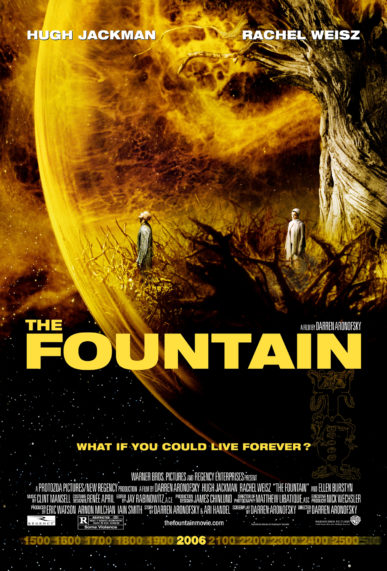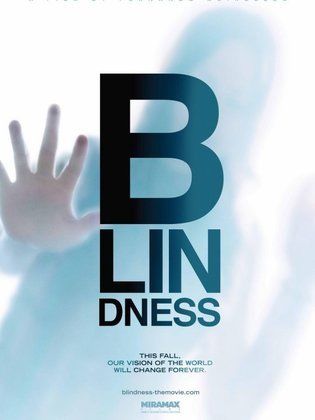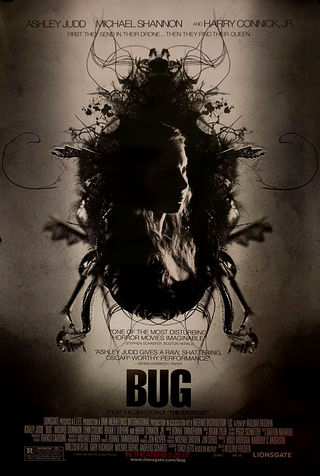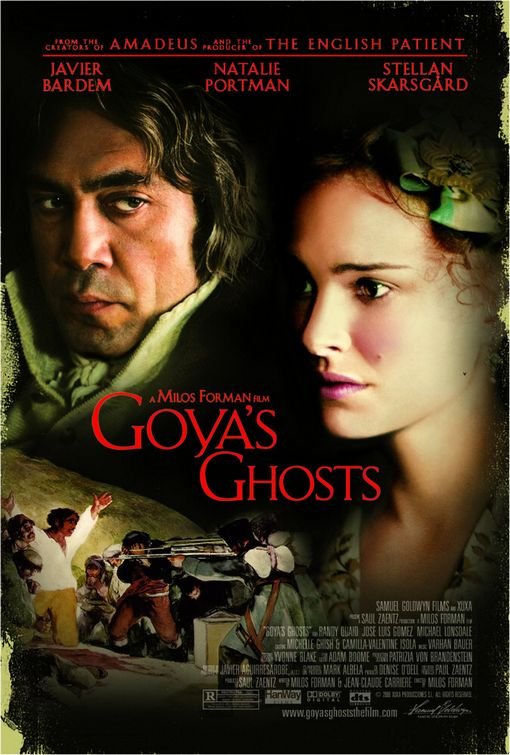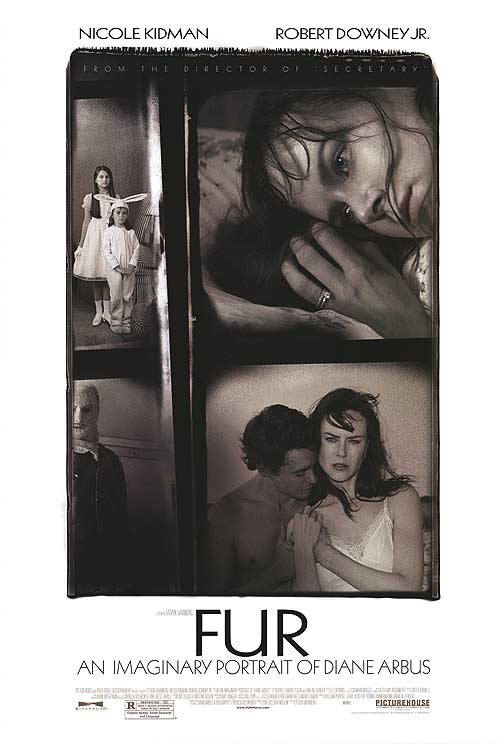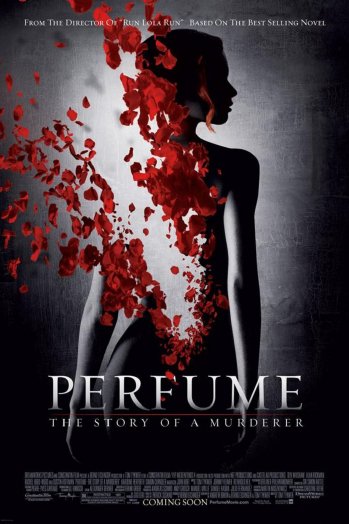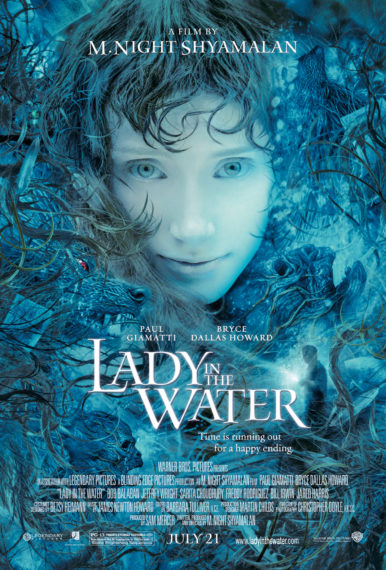Here I’m going to briefly cover several underappreciated films. I wrote a similar survey several years ago highlighting movies I felt deserved a wider exposure. I’m not going to make that argument here, as it’s my contention that the titles summarized below, all released within the last three years, will receive the attention they deserve in years to come.
Trust me, it’s only a matter of time before BLINDNESS, THE FOUNTAIN and PERFUME are resurrected as Neglected Classics…or, if you prefer, Underappreciated Masterpieces…or the Best Movies You’ve Never Seen…or simply Ahead of Their Time.
Here’s a modest proposal: Why not get in on the action early? Why not forego waiting around for a film to be reappraised (which can take decades) and appreciate its qualities right now? Yes, I realize the exhumation of a “lost classic” provides a very real thrill; there’s an entire branch of criticism, of which I’m a card-carrying member, that specializes in doing so. However, I’m also in favor of movies getting the respect they deserve before their creators are dead and buried.
Year after year countless films are unfairly dismissed by critics and audiences who years later have a change of heart. In my experience I’ve witnessed quite a few such examples, including BLADE RUNNER, THE THING, LABYRINTH, BIG TROUBLE IN LITTLE CHINA, THE SHAWSHANK REDEMPTION, FIGHT CLUB and DONNIE DARKO, to name but a few.
This trend continues, as the following overview demonstrates. I don’t expect you to share my opinions on all the eight films outlined below, but it’s a fact that all were given short shift, and all are demanding of a reappraisal.
We’ll start with a two-for: Darren Aronofsky’s 2006 sci fi puzzler THE FOUNTAIN and the following year’s somewhat similar YOUTH WITHOUT YOUTH from Francis Ford Coppola. I’ll admit I’m not entirely sold on either film, but both are impossible to dismiss.
THE FOUNTAIN was in development for over six years, and heavily anticipated as a complex and thoughtful mindblower. It is thoughtful, I’ll say that, and contains many provocative elements, with a puzzle-like structure that freely alternates past (Hugh Jackman as an Inquisition-era Spanish warrior in love with Rachel Weisz as a hot queen), present (Jackman as a scientist and Weisz as his not-long-for-this-world better half) and future (Jackman adrift SILENT RUNNING-like in outer space together with a magic tree) in hallucinatory fashion, and contains at least one eye-popping 2001-esque psychedelic lightshow.
Unfortunately neither of the central characters have much in the way of a personality, and their star-crossed love is hardly the reality-bending phenomena Aronofsky apparently believes it to be. But then I have the same problem with SOMEWHERE IN TIME, which is widely hailed as a romantic masterpiece, and I‘ve found myself thinking about THE FOUNTAIN a hell of a lot, indeed far more than most legitimately “good” movies.
The same holds true for YOUTH WITHOUT YOUTH, which despite having been made by an old man actually plays like a young man’s film. Whereas THE FOUNTAIN, which was a young man’s film, is smooth and streamlined, YOUTH WITHOUT YOUTH is chaotic and overflowing with ideas. That’s a large part of what makes it such a kick.
Tim Roth stars as a scholar who for some reason ages backwards, beginning as a decrepit geezer in Nazi Germany. There’s a young woman who Roth loves with all his heart, although precisely how or why this relationship got started I never entirely understood.
Perhaps the hallucination-packed narrative is intended as poetic and/or symbolic. Whatever it is, it’s interesting and exasperating by turns, and not a little self-indulgent. In addition to the above, Roth has a double with whom he converses, and takes a trip to India where he discovers his sweetie can speak prehistoric languages. The result is an indigestible morass of sci fi, surrealism, intellectual speculation and picturesque adventure—in other words, a film right up my alley.
BLINDNESS was a very good 2008 movie that got kicked around by seemingly everyone, starting with its Cannes Film Festival premiere and continuing through its disastrous US release. I can only assume the herd-mentality of critics is to blame for all the hate, as the film was faithfully adapted from a Jose Saramago novel that was universally acclaimed. I don’t know why it is that Saramago’s allegory of actual blindness substituting for moral blindness was seen as brilliant on the page but silly and sophomoric in movie form, nor why his narrative was acclaimed as admirably uncompromising in the book but dreary and overly pessimistic in the film. Maybe if this movie were dubbed into a foreign language and subtitled the reception might have been warmer.
BLINDNESS boasts a compellingly dark, ominous aura and an uncomfortably vivid portrayal of a world gone mad. In the lead role Julianne Moore does her finest work in some time, and Don Mackellar, Maury Chaykin and Gael Garcia Bernal provide excellent support.
It’s a rough film, certainly, but also a unique and uniquely ambitious one. Director Fernando Meirelles’ mixture of grit and surrealism is utterly distinct, although I suspect it was one of the big turn-offs for most critics, who prefer that films lean one way or the other.
BUG was director William Friedkin’s best film in years, if not decades. You wouldn’t have known that from the initial reviews, however, which wrote it off as gross and self-indulgent. Reminds me of earlier Friedkin project that, in a stunningly ironic twist of fate, was re-released around the same time BUG was making its 2007 theatrical bow: CRUISING, a 1980 box office bomb that was savaged by critics. Surprise! The latter has since been crowned with the Misunderstood Masterpiece tag—a tag I’m positive will sooner or later be bestowed on BUG.
It’s the wildly claustrophobic tale of a psychotic Desert Storm vet (Michael Shannon) who shares his delusions about ravenous bugs, mind control and other fun things with a needy young woman (Ashley Judd) who gradually comes to experience them herself. Whether Shannon has a contagious malady, as is suggested early on, or Judd was simply crazy from the get-go is left unexplained.
The film is intense to an uncomfortable degree and relentless in its unvaryingly grim trajectory, with an apocalyptic finale that contains not a hint of redemption, much less optimism. The performances of Shannon and Judd are appropriately raw and fearless, not unlike the film itself. Also like the film overall, the acting straddles the edge of total hysteria, making for a lacerating experience you‘ll never forget.
GOYA’S GHOSTS (2006) is not a ghost story, though it is the darkest movie ever made by director Milos Forman (ONE FLEW OVER THE CUCKOO’S NEST, AMADEUS), who was very likely channeling his own perilous WWII upbringing. It’s a historical chronicle centering on the 16th Century Spanish painter Goya (Stellan Skarsgaard), who Forman depicts as a kind-hearted but opportunistic rogue loyal to whoever happens to be in power. Opposing him is Javier Bardem as an even more opportunistic friar and high-ranking officer of the Spanish inquisition. Natalie Portman is also on hand as a sweet young thing who pays dearly for her naiveté.
While the scenes of inquisition-sanctioned torture and the subsequent bloody warfare are never particularly excessive, they do their job, creating an atmosphere of all-pervading madness that only the supremely crafty survive. As usual with Foreman, the photography and art direction are magnificent, his narrative compelling and the performances, particularly that of Bardem, uniformly impeccable. Yes, the film overall is uneven (the result, apparently, of a troubled production), but it works, complete with a determinedly unresolved finale. Those expecting AMADEUS 2 (as many critics and audiences evidently were) will be disappointed, but those willing to accept the film on its own terms will be sated, and far ahead of the it-was-misunderstood-during-its-release critical curve.
Also from 2006 was FUR: AN IMAGINARY PORTRAIT OF DIANE ARBUS. Reviewers were hung up on the fact that the film isn’t very insightful about the life of photographer Diane Arbus, never bothering to show a single photo of hers and sticking her in a story that, as the title makes clear, is completely made up (nor is Nicole Kidman ideal casting as Arbus, who was short, brunette and Jewish). So the filmmakers dug their own grave in many respects.
My advice? Forget the Arbus angle and concentrate on FUR’S very real virtues. Steven Sheinberg (SECRETARY) is an uncommonly skilled filmmaker with a real affinity for the freakish and grotesque, two qualities FUR has in abundance. It dramatizes the early years of Diane Arbus’ career, positing that a reclusive man covered in dark fur moved into the building where Arbus and her family were living. In the course of the film she strikes up a relationship with the fur man (nicely played by Robert Downey Jr.), who unleashes Arbus’ repressed desires and sets her on her life’s path.
PERFUME: THE STORY OF A MURDERER is a secret European audiences were in on from the start; it was released there in 2006, and to great success, before its blink-and-you’ll-miss-it U.S. bow in early ‘07. Apparently deciding the film had made all the money it was going to in Europe (where it raked in over $100 million), Dreamworks gave it a royal dumping. Even more dispiriting was the near unanimous dismissal of the film by stateside critics.
It’s an adaptation of Patrick Suskind’s 1986 novel. That book happens to be one of my all-time favorites, meaning I was deeply nitpicky about the film. I’m always hesitant seeing a favorite book venture out into the world, and the fact that this film was able to withstand my skepticism is a testament to director Tom Tykwer’s cinematic mastery. Here Tykwer attempted something that hasn’t been done in cinema (if I’m not mistaken) since John Waters’ POLYESTER: he used image and sound to convey a sense of smell.
That’s in keeping with the book, which was fragrant above all else. Tykwer for the most part follows it closely, with a visually opulent yet dark, squalid aura that nearly approximates Suskind’s prose. The story is about Grenoille, a scent-obsessed sociopath looking to create the perfect perfume in late-1700’s France. This entails much soul searching and a number of gruesome killings before the film arrives at its utterly delirious climax: an astounding mass orgy that’s staged about as well as can be imagined.
I’m going to conclude this survey with one of the most maligned films of recent years: M. Night Shyamalan’s LADY IN THE WATER. It’s probably pointless decrying the negative reviews the film got, as it was made a laughing stock before it was even released (hearing director Ivan Reitman blithely put it down on the Howard Stern Show was particularly galling—it came out the same week as Reitman’s MY SUPER EX-GIRLFRIEND, and we know what a masterpiece that was). The shocking truth, however, is that THE LADY IN THE WATER, while undeniably flawed, isn’t that bad. Matter of fact it’s actually pretty good.
It features Paul Giamatti as a janitor becoming involved with a water nymph (Bryce Dallas Howard) who appears in his apartment swimming pool. M. Night contributes superbly atmospheric direction, creating a fairy tale ambiance more vivid and atmospheric than those of most straight fantasy films.
Far less enchanting is the script. Shyamalan may have begun his career as a screenwriter, but he’s a far better director than he is a scribe. His deficiencies are painfully evident in this film’s wonky narrative, particularly during the second half, as Giamatti and his fellow tenants try to make sense of an Oriental fairy tale (actually a bedtime story Shyamalan told his kids) that has so many twists, turns and misdirections I lost interest after awhile. But I wouldn’t have missed this movie for anything, and neither should you. THE LADY IN THE WATER, like the other films outlined above, may be near-universally disliked, but that will change. Just wait.

